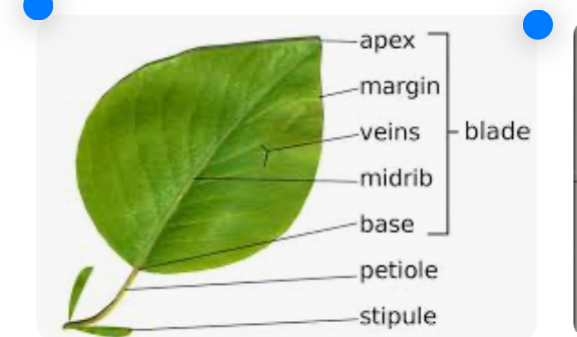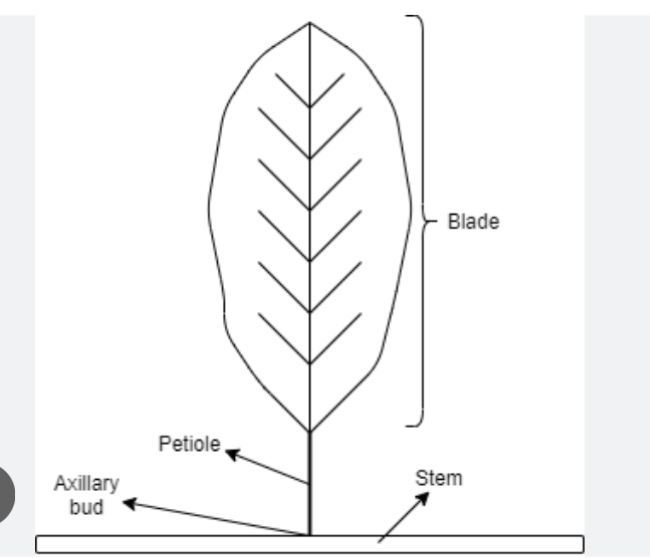In Depth Notes on Plant Biology
Main Organ Systems in Plants
Two Main Organ Systems:
Root System: made up of organs called of roots.
Shoot System: made up of organs called of stems and leaves.
Roots
Definition: Roots are underground organs that anchor plants and absorb water and minerals.
Importance:
Anchor plants in soil.
Absorb water and minerals
Store carbohydrates for energy.
Types of Root Systems
Taproot System:
One main vertical root, may be used for storage (e.g., carrot).
Fibrous Root System:
Many thin, branching roots with manyn lateral roots (commonly found in monocots).
Root Adaptations
Examples include:
Adventitious roots: roots growing from non-root tissues to support structures.
Aerial roots: found in some tropical plants to help with climbing or moisture absorption.
Storage roots: modified for storage of nutrients.
Stems
Definition: Stems are the ascending structures of a plant.
Importance:
elongate the plant
Elevate leaves and reproductive structures (flowers, fruits).
Buds
Apical Bud: location of active cell division at the tips.
Axillary Bud: Located at the nodes form lateral branches, thorns.
Leaf Structure
Components:
Blade: Broad portion of the leaf
Petiole: joins leaf to the stem at a node


Plant Tissue Types
Dermal Tissue:
outer protective covering
Vascular Tissue:
xylem and phloem found as single cluster in roots or as vascular bundles in stem and leaves
Ground Tissue:
between dermal and vascular tissue peformd photosynthesis and storage.
Dermal tissue type of cell
. pavement cells: flat cells of epidems protect inner cells and generally lack chloroplasts. cannot photosynthesis
. Guard cells: pair of curved cells that surround stomata. open and close stomata by contracting and expanding.
vascular tissue: xylem cells
. Tracheids: long, thin, tapered dead cells with pits that allow water to move through. In all vascular plants.
. vessel elements: wider, shorter dead cells with perforated ends. in most angiosperm, some gymnosperm
vascular tissue: phloem cells
. Sieve-tube elements: living cells that make up
sieve tubes. Lack nucleus and ribosomes
. companion cells: cells connect to and support metabolism of sieve tube element.
Ground tissue: Parenchyma cells
. cells have thin flexable walls contain larger vacuote. uswd for photosynthsis ( mesophyll of leaves) and storage ( roots, fruits, etc)
Vascular Tissue Arrangement … How is vascular tissue arranged in the stems of Monocots and Eudicots?
In Monocots: Vascular bundles scattered throughout the stem.
In Eudicots: Vascular bundles arranged in a ring
Solute Movement Across Membranes
How do solutes move across plant cell membranes? Describe the ways. Mechanisms:
movement of solutes and water across cell membranes. solute such as ions sugar and minerals move across plant cells membrane via active transport ( pumps AND cotransports). passive transport ( in channels and carriers)
Water Movement Across Membranes…How does water move across plant cell membranes when the plant cell is in
hypotonic, isotonic and hypertonic environments?
Hypotonic Environment: Water enters cell, causing turgor pressure to increase.
Isotonic Environment: Water moves in and out at equal rates, maintaining cell shape.
Hypertonic Environment: Water exits the cell, resulting in shrinkage and reduced turgor pressure.
Transport Routes
Apoplastic Route: Movement outside cell membrane through extracellular spaces and through dead xylem vessels
Symplastic Route: Movement of the cytosol continuum via plasmodesmata
Water and Mineral Absorption…Explain how water and minerals are absorbed by roots and transported into
xylem via the apoplastic and symplastic routes.
Roots absorb water and minerals through:
Apoplastic Pathway: Movement through soil and root hairs into the xylem.
Symplastic Pathway: Movement from root hairs into the cytoplasm, then to xylem.
Definition
Casparian Strip: waxy belt blocks apoplastic route into the xylem
Bulk Flow in Xylem….How does transpiration cause bulk flow in xylem? Explain the cohesion-
tension hypothesis.
water and minerals ( xylem sap) are transported long distances via bulk flow that involves mostly pulling xylem sap up the plant. the bulk flow results in loss of water from the leaves
Transpiration: Evaporation of water from leaves creates a negative pressure that pulls water up from roots through xylem.
Cohesion-Tension Hypothesis: as water molecule evaporates out of stomata they pull up the water molecule behind them
Opening and Closing of Stomata
Stomata open and close due to the turgidity of guard cells:
Water influx increases turgor pressure, causing stomata to open.
Water loss decreases turgor pressure, causing stomata to close.
Sugar Sources and Sinks
Sugar Sources: organs that are net producers of sugar (e.g., mature leaves).
Sugar Sinks: organs that are net consumers or depositories of sugar (e.g., roots stem, fruits).
Translocation of Sugars…How are sugars translocated from sources to sinks in a plant. Describe the
phloem sap flows from source to sink driven by pressure flow.
sugar is actively loaded into sieve- tube near source also causing uptake of water via osmosis
turgor pressure pushes phloem sapntoward sink where sigarnis unloaded and water exists
Plant Adaptations to Water Conservation…List some ways that plants have adapted to stay cool and conserve water in
arid environments.
close stomata
water storage in stores
reduced leaf size
reflect sunlight
photosynthetic adaptation
C4 and CAM Photosynthesis
C4 Photosynthesis: Efficient in hot environments; captures CO2 at night to reduce water loss, then fixes it during the day.
CAM Photosynthesis: Similar to C4, but separates the processes completely into day and night to conserve water in arid climates.